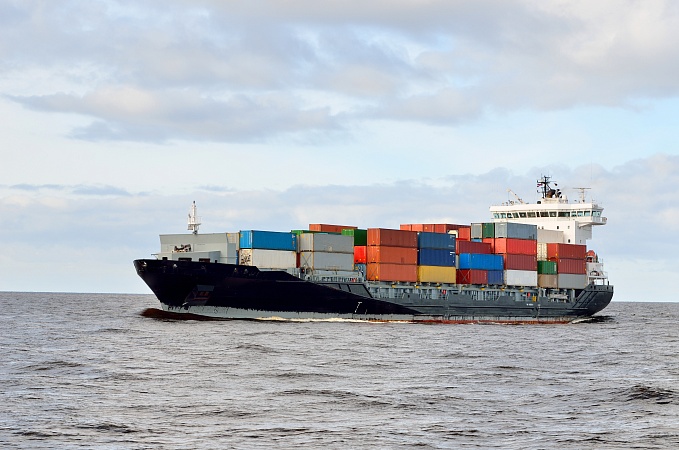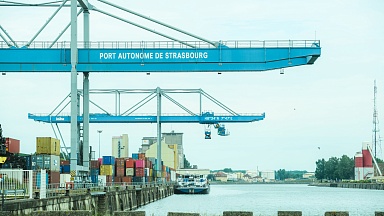After another month of high demand, over-stretched infrastructure and difficult negotiations for shippers, long-term contracted ocean freight rates now stand 85.5% higher than at this point last year.
Xeneta, the ocean and air freight rate benchmarking and market intelligence platform, states that while August saw rates rise by a relatively modest 2.2% (contrasted to July’s astonishing 28.1% jump) «there appears to be little sign of relief on the horizon, with increasing port congestion and relentless demand ahead of the all-important pre-Christmas period. Container ship operators are reaping record-breaking financial rewards as a result».
Positions of power
Oslo-based Xeneta crowd sources real-time rates from leading shippers to produce the Long-Term XSI® Public Indices, delivering detailed insights of the very latest market movements. Those movements have been following a familiar trajectory throughout the course of 2021, with climbing rates fuelled by demand outpacing supply, supply chain disruption, and the ongoing impact of Covid-19.
Patrik Berglund, Xeneta CEO, said: «In the context of 2021, a 2.2% monthly increase in rates appears modest, but in any other year this is an excellent result for carriers.»
«Remember, this is yet another rise on the back of the largest ever monthly increase in July. So, while some may have been expecting — read ‘hoping for’ if you’re a cargo owner — an adjustment downwards, we’re seeing a further demonstration of the powerful position liner operators find themselves in. They really are holding all the cards... and winning big.»
Proof of this lies in the latest set of financial results released by key carriers.
Record revenues
August saw OOIL disclose a net profit of US$2.8bn for the half-year, the best results in the group’s history, while Zim reported a net profit of US$888m for the second quarter. This figure is higher than the Israeli line’s accumulated total profits for the last five years, showcasing a spectacular turnaround.
The firm, like its peers, is now looking to expand to take advantage of what Berglund calls «red hot» market conditions.
Steady gains
August’s XSI® demonstrates that the heat is on across all major trading corridors, with every region seeing import and export benchmarks edging upwards. In Europe imports rose by 0.5%, while exports climbed 3.4%. Although the pace of growth has slowed compared to recent months, it still leaves the respective benchmarks up 123% and 49.1% year-on-year.
Results in the Far East followed a similar pattern, with imports nudging up a further 0.8% (up 50.5% since August 2020) and exports jumping by 2.5% (a massive 115.5% up year-on-year). The XSI® paints the same picture in the US, where imports increased by an additional 2.1% and exports climbed 0.6% month-on-month. The benchmarks now stand 67.2% and 16.8% up compared to the same time last year.
Seen as a whole, the XSI® is now scaling record heights and, Berglund suggests, there’s little evidence of the curve pointing downwards in the immediate future.
Cycle of delays
«While we can’t be certain of a repeat of the astronomical monthly increases the industry has grown accustomed to, further gains are certainly not out of the question,» he said.
«There’s still a dearth of equipment, high demand and, worryingly, very congested ports that are choking up the supply chain for shippers and retailers. For example, in Europe Maersk is advising customers of wait times up to 10 days at Antwerp, while Hapag-Lloyd reports that voyage delays have tripled in the first half of 2021 compared to the same period in 2020. A round trip between the Far East and Europe now takes approximately 100 days to complete. The situation isn’t much better in the US with wait times of five days (and increasing) at the Port of Los Angeles.»
Berglund said that landside infrastructure is «simply overwhelmed», with the congestion tying up vessels , and their sought after containers, in an ever-worsening cycle of delays.
«With the holiday season logistical rush round the corner things may get worse before they get better,» concluded Berglund, «and that’ll have an obvious knock-on effect on rates. As ever, we’d advise all parties in the chain to keep up to date with the very latest intelligence to understand, and get value out of, this extraordinarily competitive marketplace.»
Companies participating in Oslo-based Xeneta’s crowd-sourced ocean and air freight rate benchmarking and market analytics platform include names such as ABB, Electrolux, Continental, Unilever, Nestle, L’Oréal, Thyssenkrupp, Volvo Group and John Deere, amongst others.





